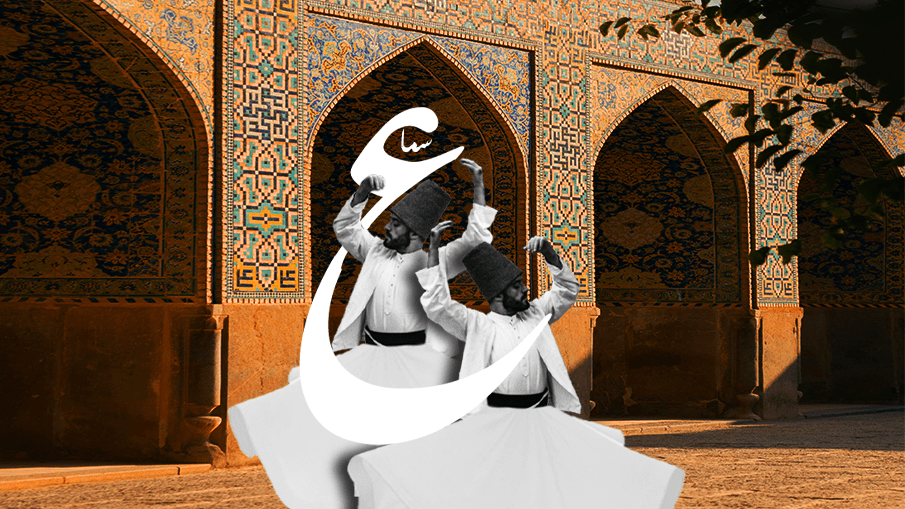Rumi Dance, also known as the Whirling Dervish dance, is a mystical and spiritual practice that goes far beyond just physical movement. It’s deeply rooted in Sufi philosophy and the teachings of the great Persian poet Jalaluddin Rumi. The dance symbolizes the soul’s journey toward divine love and enlightenment, where dancers, also known as Dervishes, lose themselves in the music and the spinning movements, ultimately seeking unity with the Divine.
Through this article, you’ll dive deep into the origins, meaning, and performance of the Rumi Dance, exploring not only its cultural and historical relevance but also its profound spiritual message.
Introduction to Rumi Dance

Rumi Dance is more than just an artistic expression—it’s a spiritual experience. Rooted in the Sufi tradition, this dance form is closely associated with the teachings of the 13th-century Persian poet and mystic Jalaluddin Rumi. Known for its symbolic spinning movements, the dance represents a spiritual journey of love, unity, and connection with the divine.
Often performed by Whirling Dervishes of the Mevlevi Order, this mystical dance involves whirling in continuous circles to achieve a state of spiritual transcendence. It reflects Rumi’s philosophy, which emphasizes the dissolution of the self and the ultimate union with God. The rhythmic turns and meditative spinning are central to Sufism, a branch of Islam focused on personal connection with the Divine, and the dance is considered a form of worship.
History and Origins of Rumi Dance
The Rumi Dance traces its origins back to Jalaluddin Rumi, a famous 13th-century Persian poet, philosopher, and Sufi mystic. Rumi’s teachings centered around divine love and spiritual awakening, which he often expressed through poetry, music, and dance. His followers, deeply inspired by his mystical works, formed the Mevlevi Order, a Sufi brotherhood that became synonymous with the Whirling Dervishes.
The Mevlevi Order, established by Rumi’s son Sultan Walad, introduced the practice of the Sema ceremony—a spiritual performance involving chanting, poetry recitation, music, and dance. The most striking element of this ceremony is the whirling dance, which symbolizes the soul’s ascent toward divine love, enlightenment, and union with God. In the dance, Dervishes metaphorically shed their ego, transcending worldly concerns and seeking spiritual purity.
Historically, the Rumi Dance developed in Konya, Turkey, where Rumi lived and wrote most of his poetic works. Over time, this unique spiritual practice became integral to Sufi rituals and ceremonies, with the Mevlevi Dervishes continuing to perform the dance as part of their devotion.
The Philosophy Behind Rumi Dance
At its core, Rumi Dance is about dissolving the ego and embracing divine love. According to Sufi teachings, the dance represents the soul’s journey to God, symbolizing unity, love, and self-purification. The physical act of whirling in circles mimics the movement of celestial bodies, illustrating the harmony of the universe and the dancer’s place within it.
Rumi believed that God’s presence could be found in every aspect of life, and the dance was a way to connect with this divine energy. Whirling Dervishes hold one hand up to the sky to receive divine blessings and one hand down toward the earth to share this energy with humanity. This symbolic posture reflects the dancer’s role as a bridge between heaven and earth.
Furthermore, the dance is an act of surrender. Through continuous turning, the dancer aims to lose awareness of the physical body and transcend into a state of spiritual ecstasy, achieving a connection with the Divine that goes beyond words.
How Rumi Dance is Performed
The Rumi Dance, or Sema ceremony, is a carefully structured and deeply symbolic performance that reflects centuries of spiritual tradition. The ritual begins with a prayer or recitation of Rumi’s poetry, setting the stage for a deeply spiritual experience. The Dervishes, dressed in specific attire, step into the ceremonial space in reverence, each movement reflecting their journey towards God.
The Attire
The Whirling Dervishes wear symbolic garments during the dance:
- Tall Hat (Sikke): This represents the tombstone of the ego, symbolizing the death of the self.
- White Robe (Tennure): This long white garment represents the shroud of the ego and the purity of the soul, as the dancer seeks spiritual purification.
- Black Cloak (Hirka): Worn at the beginning of the ceremony, the black cloak represents worldly attachments. Before starting the dance, the cloak is removed, symbolizing the Dervish’s shedding of material concerns in favor of spiritual rebirth.
The Dance Movements
The performance itself is a structured ritual with specific stages:
- Sema Ceremony: The central part of the Rumi Dance, where the Dervishes begin their whirling. They spin counterclockwise in a continuous circular motion, which represents the natural movement of the planets and the universe.
- Hand Gestures: The right hand is raised to the sky, receiving divine energy, while the left hand faces the earth, sharing this energy with the world. This posture symbolizes the Dervish’s role as a conduit for divine blessings.
- The Ney (Flute): Music plays an essential role in guiding the movements of the dancers. The ney flute is often used, creating a haunting and soulful sound that elevates the spiritual experience. The steady rhythm of the drum also keeps the dancers in sync with the spiritual energy of the ceremony.
The Stages of the Ceremony
The dance is divided into four parts, known as the Four Salams (Salutations). Each part symbolizes different aspects of the spiritual journey, such as the dervish’s progression toward spiritual enlightenment and his connection with the Divine.
Symbolism in Rumi Dance
Every element of the Rumi Dance, from the movements to the attire, carries deep symbolism. The counterclockwise spinning symbolizes the soul’s journey toward spiritual enlightenment, a metaphor for letting go of the ego and embracing divine love.
The Circular Movements
The continuous whirling in circles reflects the eternal movement of the universe, reminding the dancer of their place within the cosmic order. Like planets orbiting the sun, the Dervishes’ turns mirror the harmony and balance of the universe, expressing the belief that all creation is interconnected.
The Hands’ Position
The raised right hand receives blessings from the heavens, while the left hand, facing downward, channels these blessings to the earth. This posture signifies the Dervish’s role as a spiritual intermediary, embodying the connection between the divine and the earthly realms.
Rumi’s Poetry and the Dance
Rumi’s poetry is inseparable from the whirling practice, as his verses frequently evoke themes of spinning, motion, and divine love. For the Sufi mystic, dance was not just a physical activity but an expression of the soul’s longing for unity with the Divine. The rhythm of the whirling Dervishes mirrors the flow of Rumi’s words, which guide the dancers into a meditative state where they can transcend the ego and connect with God.
One of Rumi’s most famous poems reflects this powerful connection between movement and spiritual freedom:
“Dance, when you’re broken open.
Dance, if you’ve torn the bandage off.
Dance in the middle of the fighting.
Dance in your blood.
Dance when you’re perfectly free.”
—Rumi
These lines capture the essence of the Rumi Dance, urging individuals to find freedom through movement, even in the midst of pain or struggle. The act of dancing becomes a form of spiritual liberation, where the soul is no longer bound by worldly concerns but instead dances freely in the light of divine love.
Rumi’s poetry, like the whirling dance itself, is a testament to the transformative power of love, surrender, and spiritual openness. Both the poems and the dance embody the same mystical journey—one of inner awakening, divine connection, and an ultimate release into the vastness of the universe.
Modern-Day Rumi Dance: Where It Is Practiced Today
The Rumi Dance continues to hold profound cultural and spiritual significance, especially in Turkey, where the Mevlevi Order originated. The city of Konya, where Rumi spent much of his life, remains a hub for Sufi traditions, and the annual Konya Festival draws pilgrims and visitors from around the world to witness the mesmerizing Whirling Dervish performances.
In addition to Turkey, the Rumi Dance has spread across the globe, with Sufi groups practicing it in countries far beyond its origin. From spiritual festivals in Europe to cultural events in the United States, the dance is embraced by people of various faiths and backgrounds, resonating with its universal message of love, unity, and spiritual transformation.
The Impact of Rumi’s Teachings on Dance and Art
Rumi’s teachings go beyond dance—they’ve inspired countless forms of art, from poetry and music to painting and sculpture. His philosophy of divine love and unity has resonated with artists around the world, influencing not only spiritual practices like the Whirling Dervish dance but also artistic movements and cultural expressions.
Musicians, painters, and poets alike have found inspiration in Rumi’s words. His themes of love, mysticism, and the search for truth continue to spark creativity in contemporary artists, bridging the gap between ancient wisdom and modern expression.
Why Danaa School?
Danaa School is committed to preserving and promoting the rich cultural heritage of Persian poetry, including the timeless poems of Rumi. With a curriculum designed to inspire and educate, Danaa School allows students to explore the world of the Persian poetry and discover the profound wisdom and beauty contained within.
Through engaging lessons, interactive activities, and immersive experiences, Danaa School students learn about the legendary Persian poets and develop a deeper appreciation for the cultural heritage that continues to shape their identity and worldview.
Find Your Ideal Teacher
At Danaa School, you can choose your Farsi tutor from a selection of qualified and experienced teachers. Begin an exceptional journey into the world of Persian language!
Book Your Trial Lesson
FAQs
What is the purpose of Rumi Dance?
The Rumi Dance is a spiritual practice that aims to transcend the ego and connect with divine love. It represents the soul’s journey toward unity with God and is a meditative act of devotion.
Is Rumi Dance only practiced by followers of Sufism?
No, while Rumi Dance originates in Sufi mysticism, it has gained popularity among people of various spiritual traditions and backgrounds.
Are there specific requirements for practicing Rumi Dance?
While there are no strict requirements, practitioners are encouraged to approach Rumi Dance with reverence, sincerity, and a willingness to engage in spiritual contemplation and self-reflection.
Can anyone learn Rumi Dance, or is it reserved for skilled dancers?
Rumi Dance is accessible to individuals of all skill levels and backgrounds. With dedication, patience, and guidance from experienced teachers, anyone can learn and benefit from this ancient spiritual practice.
What are some ways to experience Rumi Dance without attending formal classes or events?
Many online resources, including instructional videos, books, and articles, can guide practicing Rumi Dance at home. Additionally, attending performances or workshops led by experienced practitioners can offer valuable insights and inspiration.
Is Rumi Dance suitable for people of all ages, or is it limited to certain age groups?
Rumi Dance is inclusive and can be practiced by individuals of all ages, from children to seniors. However, listening to your body and adapting the movements to suit your physical capabilities and limitations is essential.
Are there any precautions before engaging in Rumi Dance, particularly for individuals with medical conditions or physical limitations?
While Rumi Dance is generally safe for most people, individuals with pre-existing medical conditions or physical limitations should consult a healthcare professional before beginning any new physical activity. It’s essential to listen to your body, start slowly, and make modifications as needed to ensure a safe and enjoyable experience.
Conclusion
In summary, the Rumi Dance is a powerful and timeless way for people to express their desire for spiritual connection and growth. It comes from the teachings of the famous Sufi mystic, Jalaluddin Rumi, and continues to inspire and uplift people all over the world, no matter their age or background. The dance carries universal messages of love, unity, and compassion. By embracing these values, we can contribute to creating a more peaceful and harmonious world for future generations.
Now that you know about the Rumi Dance, you might feel drawn to explore Persian literature and the beauty within Rumi’s works. If so, Danaa School’s Poetry classes are the perfect place to dive deeper into this rich cultural heritage. Enroll today to begin your journey!
Want to Learn Persian Poetry at Danaa School?
Here are the best resources for you!









